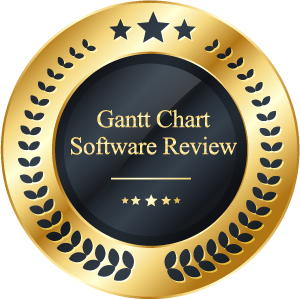
Introduction to Gantt Chart Software Review for 2025
Gantt charts are indispensable for project managers to visualize timelines, manage resources, and track dependencies effectively. This review focuses on three top contenders for Gantt chart tools in 2025: MindView, MS Project, and MindManager. These tools are evaluated for their ease of use, advanced features, and business applications, helping you determine the best fit for your organization.



Objectives of This Gantt Chart Software Review
Are you looking for the best Gantt chart software but feeling overwhelmed by the sheer number of options? Should you opt for a feature-rich desktop solution or a simpler online tool? Does paying for professional Gantt chart software deliver enough value compared to free or basic alternatives? The choices can be daunting, especially when trying to identify which software aligns with your project management needs.
As a project manager, I understand how critical it is to have the right tool. Gantt chart software isn’t just about creating timelines; it’s about improving team collaboration, tracking milestones, managing resources, and ultimately ensuring project success. Choosing the right software means understanding your objectives and how each tool can help you achieve them.
In this review, I evaluated three of the best professional Gantt chart software options available: MindView, MS Project, and Mind Manager. Each of these tools offers unique features, strengths, and use cases that cater to different types of users—from agile startups to large enterprises.
This review dives deep into their capabilities, including ease of use, Gantt chart functionalities, business applications, and more. My goal is to provide a comprehensive, unbiased analysis to help you make an informed decision. Each tool has its strengths, and by comparing them across a core set of criteria, I’ve highlighted which one might be the best fit for your project management needs and budget.
Spoiler Alert! The Final Verdict on Gantt Chart Software
Here’s the bottom line: while all three Gantt chart software tools—MindView, MS Project, and MindManager—offer unique advantages, MS Project claims the title of gold standard for enterprise-grade functionality, with MindView standing out as the most versatile and user-friendly option.
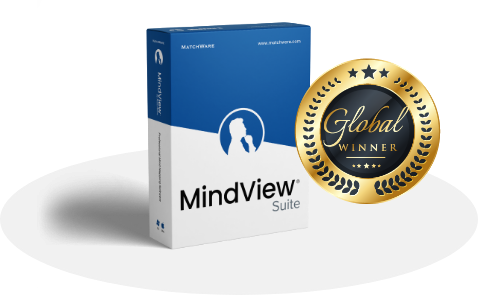
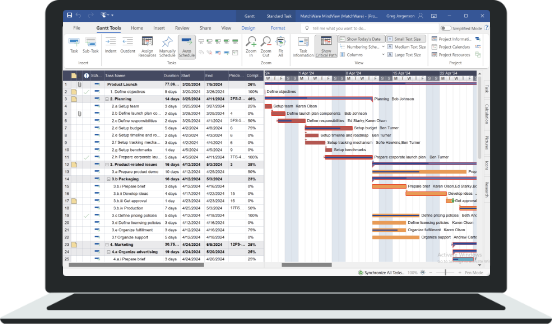

MindView: The Versatile Powerhouse
MindView takes the lead for professionals and teams seeking a balance of advanced Gantt chart capabilities, ease of use, and excellent value. Its ability to seamlessly switch between Gantt charts, mind maps, timelines, and Kanban boards sets it apart. MindView’s intuitive interface and strong Microsoft Office integration make it accessible to beginners while still offering the depth needed by experienced project managers. It’s ideal for managing dynamic, multi-faceted projects where flexibility and visual tools are key.

MS Project: The Gold Standard for Complex Projects
For seasoned project managers handling large, complex endeavors, MS Project remains the unrivaled choice. With advanced resource leveling, dependency tracking, and enterprise-grade reporting, it excels in industries like construction, IT, and engineering that demand meticulous control over timelines and budgets. However, its steep learning curve, high cost, and complex setup can be a barrier for smaller teams or less experienced users. MS Project shines when used by professionals with advanced project management knowledge who require precision and scale.
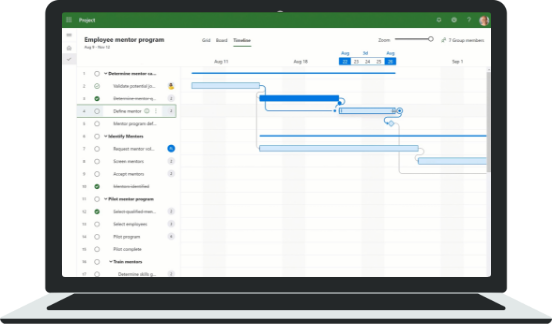
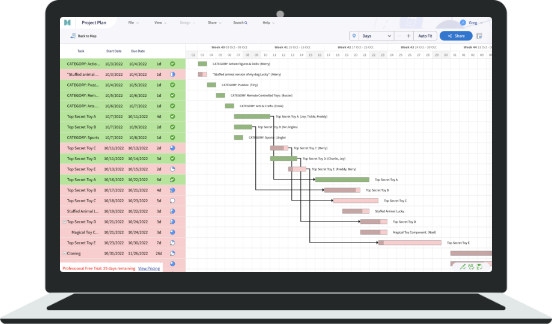

MindManager: The Visual Strategist’s Choice
MindManager is a solid option for teams and individuals prioritizing visualization and brainstorming alongside project planning. While its Gantt chart features are serviceable, they lack the advanced functionality of MS Project or the versatility of MindView. MindManager is best for small businesses, startups, and teams focusing on strategic planning, offering tools for task tracking and creative visualization but falling short in areas like resource management and baselining.
Final Thoughts
MS Project is the ultimate choice for large-scale, enterprise-level projects, offering unmatched depth for experienced professionals. However, for those seeking a versatile, user-friendly solution with dynamic visualization capabilities, MindView is the standout. MindManager, while strong in creative applications, lags behind in advanced project management features, making it best suited for smaller, less complex initiatives.
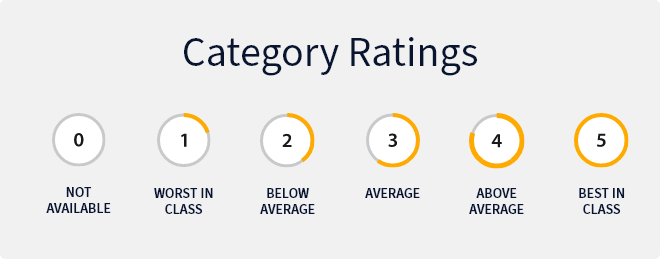
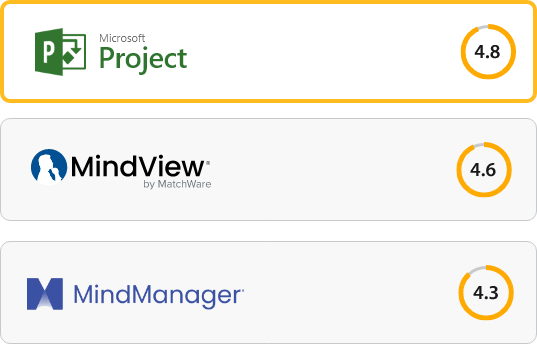
Overall Rating out of Five
Based on use, value, and feature set:
Each tool excels in its unique strengths: MindView stands out for its unparalleled versatility and value, making it ideal for teams needing flexibility and visual project management tools, while MS Project remains the heavyweight champion for large-scale, enterprise-grade project management with its robust functionality and precision.
-
 Read on for a detailed breakdown of features and business use cases to discover which tool is the perfect fit for your project needs.
Read on for a detailed breakdown of features and business use cases to discover which tool is the perfect fit for your project needs.
The Evolution of Gantt Chart Software
Let’s take a moment to explore how Gantt chart software has evolved into one of the most indispensable tools for project management. The Gantt chart was first introduced in the early 20th century by Henry L. Gantt as a manual scheduling tool designed to visually represent project timelines and task dependencies. These early charts were created by hand, often on large sheets of paper, and required painstaking updates as projects progressed or priorities.
The advent of digital technology revolutionized Gantt charts, transforming them from static diagrams into dynamic, interactive tools. Early project management software digitized Gantt charts, making it easier to adjust timelines, add tasks, and analyze dependencies in real-time. Today, Gantt chart software has become a cornerstone of project management, enabling teams to plan, monitor, and execute projects with unparalleled precision and flexibility changed.

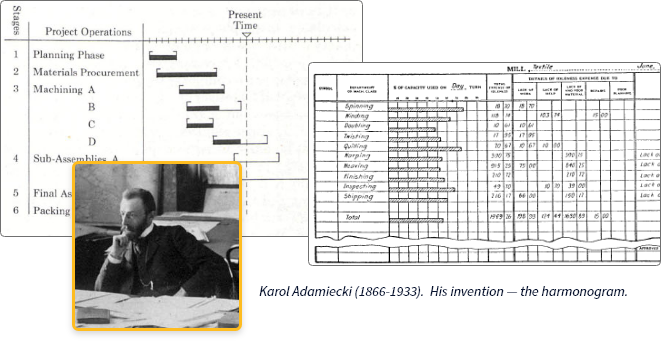
Modern Gantt chart software, such as MindView, MS Project, and MindManager, has taken this evolution even further. These tools integrate advanced functionalities like resource allocation, progress tracking, risk management, and seamless collaboration. They also offer compatibility with other business tools like Microsoft Office, ensuring that Gantt charts are not just static visualizations but central components of comprehensive project management ecosystems.
What was once a static planning tool is now a dynamic asset for industries across the board. From startups to global enterprises, Gantt chart software is used to coordinate timelines, optimize resource allocation, and keep projects on track. Its evolution reflects the growing complexity of modern business, where clear communication, adaptability, and efficiency are more critical than ever.
High-Level Overview of Gantt Chart Software Programs
To kick off, let’s take a high-level look at the key features offered by MindView, MS Project, and MindManager for Gantt chart functionality. This comparison will help you quickly identify which tool aligns with your specific project management needs. If a tool lacks a feature critical to your workflow, you can narrow down your choices right away.
 |
 |
 |
|
|---|---|---|---|
| Feature | |||
| Multiple Views | Yes | Yes | Yes |
| Gantt Charts | Yes | Yes | Yes |
| Task Dependencies | Yes | Yes | Yes |
| Resource Allocation | Yes | Yes | Yes |
| Baseline Tracking | Yes | Yes | LIMITED |
| Real-Time Collaboration | Yes | Yes | Yes |
| Microsoft Office Integration | Yes | Yes | Yes |
| Advanced Reporting | Yes | Yes | LIMITED |
| Ease of Use | High | Moderate | High |
| Accessibility | Yes | Yes | Yes |
| Integration with other tools | Yes | Yes | Yes |
| Scalability | High | Very High | Moderate |
| Pricing | COMPETITIVE | EXPENSIVE | COMPETITIVE |
Summary of Gannt Chart Software Business Use Cases

MindView combines an intuitive interface with powerful Gantt chart features, making it an excellent choice for businesses focused on project planning and management. With detailed task dependencies, resource allocation, and real-time collaboration, MindView is perfect for professionals managing mid-sized to complex projects. Its seamless integration with Microsoft Office ensures polished exports for presentations, making it invaluable for client-facing roles, project managers, and consultants who need to deliver clear and professional project updates.
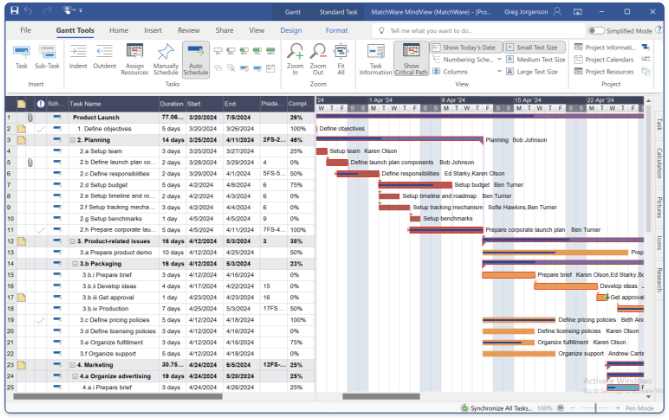

MS Project stands out as a robust tool for handling large-scale and intricate projects. Its advanced Gantt chart capabilities include baseline tracking, resource leveling, and critical path analysis, making it indispensable for enterprise-level project managers and teams that require granular control over budgets, timelines, and resource allocations. While it has a steeper learning curve, MS Project is the go-to tool for industries such as construction, IT development, and manufacturing, where precision and detailed reporting are critical.
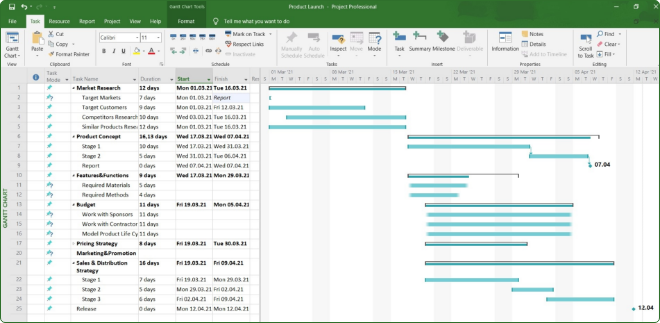

MindManager offers a unique blend of mind-mapping and Gantt chart capabilities, catering to professionals who need to visualize project workflows alongside timelines. Its features are ideal for businesses focused on strategic planning, team collaboration, and medium-complexity project management. While its baseline tracking and reporting are not as advanced as MS Project, MindManager shines in environments where brainstorming, decision-making, and presentation-ready outputs are key deliverables. It’s especially valuable for creative teams, marketing agencies, and corporate strategists.
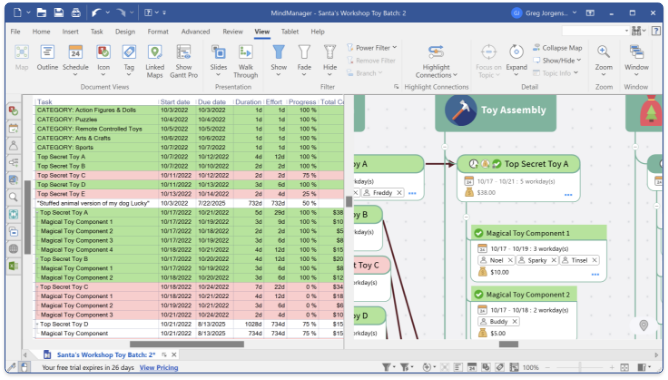
Detailed Gantt Chart Software Review
This in-depth analysis highlights the features, usability, and suitability of MindView, MS Project, and MindManager for different business applications. By comparing these tools, you can better understand their unique strengths and make an informed decision based on your project management needs and workflow preferences.
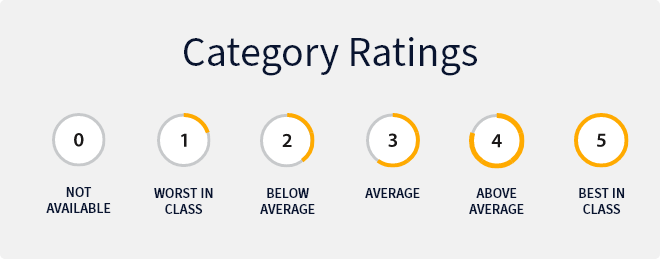
 |
 |
 |
|
|---|---|---|---|
| Total | 140 | 146 | 121 |
| Platform | |||
| PC | Yes | Yes | Yes |
| Mac | Yes | No | Yes |
| Tablet | Yes | Yes | Yes |
| Web | Yes | Yes | Yes |
| Resource Management | |||
| Resource Calendars | 5 | 5 | 4 |
| Effort-Driven Tasks | 5 | 5 | 5 |
| Resource Costs | 5 | 5 | 4 |
| Material Costs | 5 | 5 | 4 |
| Fixed Costs | 5 | 5 | 5 |
| Resource Pool | 3 | 5 | 3 |
| Scheduling | |||
| Dependencies | 4 | 5 | 4 |
| Constraints | 4 | 5 | 4 |
| Resource Leveling | 4 | 5 | 3 |
| Split Tasks | 5 | 5 | 4 |
| Milestones | 5 | 5 | 5 |
| Interactive Gantt Chart | 5 | 5 | 4 |
| Manually Scheduled Tasks | 5 | 5 | 4 |
| Task Types | 5 | 5 | 4 |
| Critical Path | 4 | 5 | 4 |
| Tracking | |||
| Baselining | 4 | 5 | 4 |
| Multi-Projects | 4 | 5 | 3 |
| Cost Tracking | 4 | 5 | 4 |
| Time Tracking | 5 | 5 | 3 |
| Views and Reports | |||
| Work Breakdown Structure (WBS) | 5 | 5 | 4 |
| Network Diagram | 5 | 5 | 3 |
| Task Board | 5 | 4 | 4 |
| Project Timeline | 5 | 4 | 4 |
| Project Reports | 5 | 4 | 4 |
| Risk Analysis | 4 | 5 | 3 |
| Filtering of Content | 5 | 5 | 4 |
| Export/Import | |||
| MS Project Compatibility | 5 | 5 | 4 |
| MS Project XML | 5 | 5 | 4 |
| Excel | 5 | 5 | 4 |
| Word | 5 | 4 | 4 |
| Other | |||
| User Friendliness | 5 | 4 | 4 |
| Total | 140 | 146 | 121 |
Key takeaways from the detailed review of Gantt chart software
MS Project: The Best for Large, Complex Projects
Strengths: As the industry-standard for project management, MS Project excels in advanced Gantt chart features like baseline tracking, critical path analysis, resource leveling, and multi-project management. It is designed to handle enterprise-level projects with intricate dependencies and compliance needs.
Considerations: MS Project is a powerhouse but comes with a steep learning curve, requiring advanced project management expertise. It also demands a significant setup effort, making it overkill for smaller teams or simpler projects. Additionally, its high cost can deter smaller businesses, with pricing often inaccessible for budget-conscious organizations.
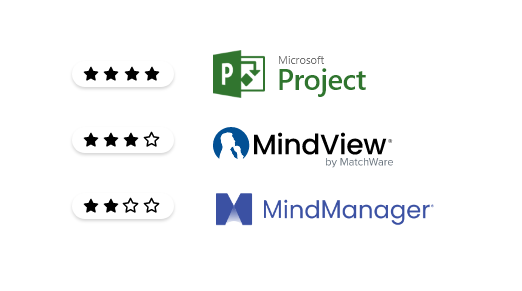
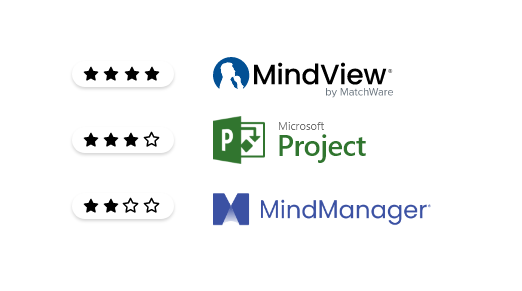
MindView: The Most Versatile and Visual Option
Strengths: MindView offers unmatched flexibility, allowing users to seamlessly switch between Gantt charts, timelines, mind maps, and Kanban boards. Its interactive Gantt chart supports real-time updates, task dependencies, milestone tracking, and cost management, all in an intuitive interface.
Considerations: MindView’s ease of use, comprehensive features, and affordability make it the best choice for businesses of all sizes. It eliminates the steep learning curve of MS Project while retaining robust functionality, ensuring accessibility even for non-expert users.
MindManager: Best for Creative Strategists
Strengths: MindManager blends mind mapping and project management, offering Gantt charts with brainstorming tools for creative planning. While it lacks the advanced scheduling and tracking features of MS Project and MindView, it shines in visual strategy and task organization.
Considerations: While MindManager is excellent for brainstorming and creative strategy, its Gantt chart features are less advanced, making it a secondary option for users needing robust project scheduling and tracking.
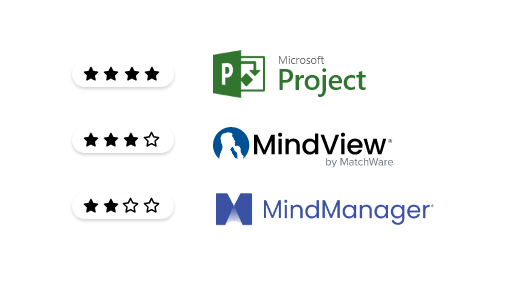

Conclusion: MS Project Leads for Complexity, MindView for Usability
MS Project is the gold standard for handling large, complex projects, making it indispensable for enterprise teams with advanced project management knowledge and the budget to support its high cost. However, for smaller teams or businesses seeking a user-friendly yet powerful solution, MS Project often feels like overkill.
MindView, on the other hand, emerges as the most useable and versatile option, offering a robust balance of advanced Gantt chart features and ease of use. It caters to businesses across industries, from creative agencies to corporate teams, without the complexity or price tag of MS Project.
MindManager serves as an excellent tool for creative thinkers and smaller teams, excelling in visual planning but falling short in advanced scheduling. It’s best suited for strategic planning rather than in-depth project execution.
For businesses prioritizing complexity and enterprise-level functionality, MS Project remains the winner. But for a cost-effective, adaptable solution that works across various industries, MindView stands out as the preferred choice.
Now that you have a detailed understanding of the features that are available in each tool, and how they rank on a scale of 0-5, let’s take a look at the usability of each Gantt Chart software tool.
Usability of Professional Gantt Chart Software
Scheduling with Gantt Charts
Creating a detailed work breakdown structure (WBS) is an essential first step in scheduling a project with Gantt charts. Both MindView and MindManager stand out by allowing users to generate a WBS through their built-in brainstorming and mind mapping features. These visual tools enable easy idea organization before seamlessly converting the structure into a Gantt chart, streamlining project planning.
When it comes to scheduling tasks, MS Project and MindView are exceptional, offering advanced features like constraints, dependencies, task types, and effort-driven task scheduling. MS Project further excels with resource leveling, automatically resolving resource overallocation issues to ensure smooth task assignment. While MindManager provides basic Gantt chart functionality, it lacks the robust scheduling options found in MindView and MS Project, which can make it less suitable for detailed project planning.
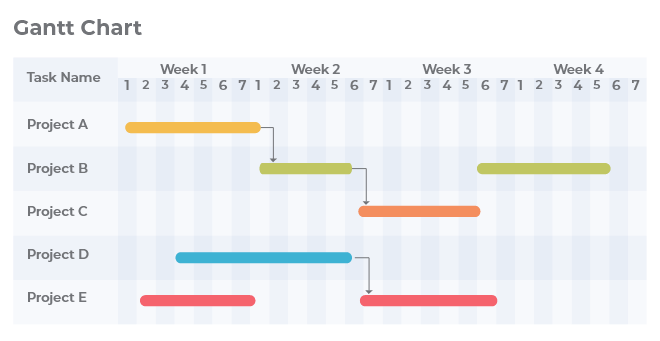
Resource Management
Managing resources effectively is critical for precise project planning. Both MS Project and MindView allow for the creation of individual calendars for each resource, enabling project managers to account for holidays, working hours, and custom schedules. These tools also support effort-driven tasks, which adjust timelines based on resource availability.
In terms of cost tracking, MS Project and MindView shine, offering features to input hourly rates for resources and material costs. These capabilities ensure accurate budget forecasting and tracking throughout the project lifecycle. While MindManager supports task costs, it falls short in offering detailed resource cost breakdowns.

Gantt Chart Management: Tracking and Baselining
Tracking progress against the original plan is essential for effective project management. Both MindView and MS Project support baselining, allowing users to compare planned versus actual progress. MS Project takes this a step further, enabling users to set up to 10 baselines and offering detailed reports that highlight deviations between them. MindView offers unlimited baselines and simplifies tracking with visually intuitive reports, making it a highly user-friendly option.
Unfortunately, MindManager lacks baselining capabilities, which can make it challenging to track project performance over time.
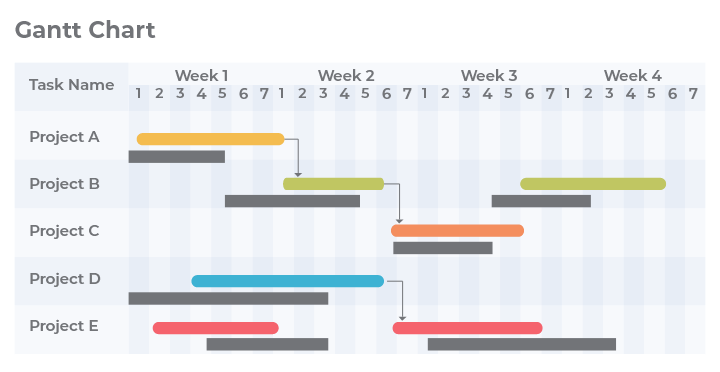
Reports and Analysis
MS Project leads in reporting, providing a comprehensive suite of built-in reports for tasks, costs, resources, and more. Its custom reporting feature allows users to “drill down” into specific project details, making it ideal for large, complex projects.
MindView also provides robust reporting capabilities, focusing on visually appealing and intuitive formats. While it does not match the breadth of MS Project’s offerings, its reports are user-friendly and perfect for quick insights.
MindManager lags in reporting functionality, offering only basic export options to Excel for users to manually create reports.
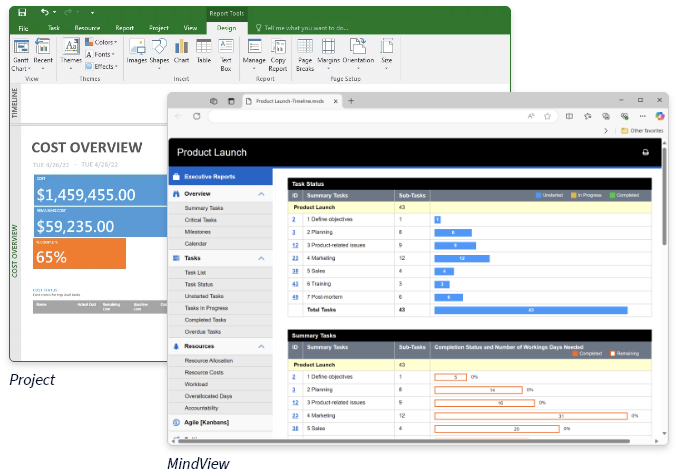
Import/Export Functionality
Sharing project data seamlessly is crucial for collaboration, especially when colleagues use different software. MindView and MindManager excel in exporting options, supporting the entire MS Office suite, including MS Project. Both tools also support Project XML, the industry-standard format for interoperability, enabling data sharing without requiring MS Project to be installed.
MS Project is highly compatible with external tools but requires proper setup and expertise to utilize its export and import features effectively.
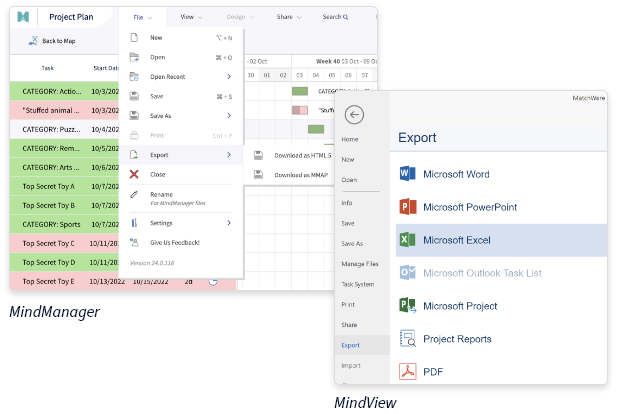
Enterprise Solutions
For enterprise-level project management, MS Project Professional with Project Server is a top choice. It offers portfolio management, advanced resource allocation, and collaboration tools. However, file locking can limit multi-user editing, where other enterprise tools like Primavera P6 may have an edge.
MindView also supports large organizations by offering comprehensive Gantt chart capabilities, integration with MS Office, and XML compatibility, making it a scalable solution for medium-to-large businesses. While MindManager is better suited for smaller teams focusing on creative planning, it lacks the advanced features needed for enterprise-grade project management.
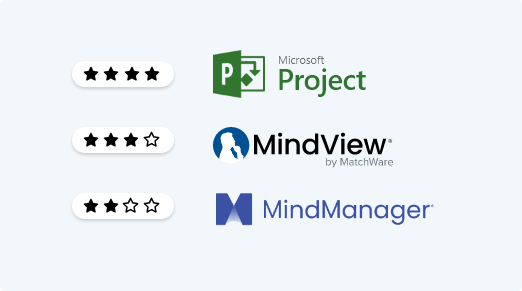
Highlighting Key Usability Features of Professional Gantt Chart Software
By considering these features and strengths, you can select the Gantt chart software that aligns best with your project needs and organizational size. MindView offers unparalleled versatility, while MS Project dominates in complexity and scale. MindManager provides a simpler, more creative approach for smaller teams.
 |
 |
 |
|
|---|---|---|---|
| Feature | |||
| WBS Creation | Yes | No | Yes |
| Interactive Gantt Chart | Yes | Yes | LIMITED |
| Constraints and Dependencies | Yes | Yes | Yes |
| Resource Calendars | Yes | Yes | No |
| Effort Driven Tasks | Yes | Yes | Yes |
| Hourly Rates & Material Costs | Yes | Yes | No |
| Baselining | Yes(Unlimited) | Yes(10) | No |
| Reporting | Visually Intuitive | Comprehensive | Basic |
| Import/Export Options | Extensive | Extensive | Limited |
| Enterprise Compatibility | Medium-Large | Large | Small-Medium |
Key Takeaways of Useability Features in Gantt Chart Software
- MindView: Best for users seeking a balance of advanced Gantt chart features and ease of use, making it ideal for businesses of all sizes.
- MS Project: The gold standard for managing large, complex projects but requires significant expertise and budget.
- MindManager: A great option for visual strategists and small teams, but its Gantt chart capabilities lag behind competitors.
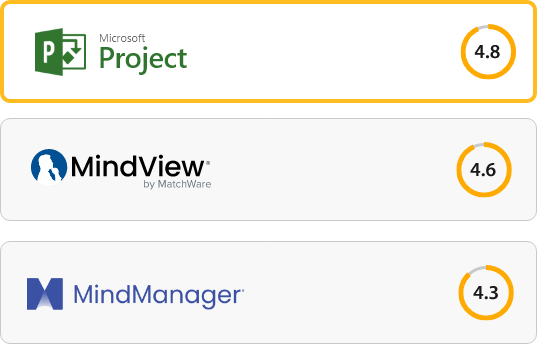
In-Depth Review of Gantt Chart Software Features & Business Use Cases
Before we embark on this journey into the world of Gantt chart software, consider this your last chance to stick with the tried-and-true recommendations I’ve already laid out. But if you’re ready to explore the nuances and uncover the unique strengths of each tool, let’s dive in. We’re about to take a deep dive into MindView, MS Project, and MindManager — each bringing its own flair to the table. Buckle up, because this comparison promises to be insightful, enlightening, and maybe even a little exciting!
Key Features
- Multiple View Options: Includes Gantt Chart, Mind Map, Kanban, Timeline, and Calendar views, allowing users to approach projects from different perspectives.
- Microsoft Office Integration: Seamlessly exports and imports with Word, Excel, PowerPoint, and Project.
- Real-Time Collaboration: Supports cloud-based collaboration for teams working remotely.
- Task Management: Features dependency tracking, milestone creation, and priority setting.
- Budget Tracking: Allows for detailed cost tracking with resource and material cost inputs.
- Baselining: Unlimited baselines for tracking project progress and deviations.
- Ease of Use: Intuitive interface designed for professionals and beginners alike.
Business Use Case
Creative Agencies
- MindView excels in dynamic project planning with its ability to seamlessly transition between Gantt charts, mind maps, and Kanban boards. Its intuitive interface allows creative teams to visualize tasks, timelines, and dependencies without missing critical details.
Consulting Firms
- For consultants managing multiple client projects, MindView offers unified calendars and detailed task management tools, making it easy to track milestones, dependencies, and costs while maintaining clear communication with stakeholders.
Education and Training
- MindView’s visual views and interactive Gantt chart functionality make it perfect for educators and trainers who need to create engaging schedules and lesson plans while maintaining adaptability for real-time updates.
Finance and HR
- MindView simplifies budget tracking and resource allocation, making it ideal for departments focused on managing costs, timelines, and resource utilization with minimal complexity.

In summary, MindView excels in project management and planning, offering detailed Gantt charts, task dependencies, and versatile views. Its unmatched ability to switch between project perspectives makes it a must-have for diverse professional settings.
Key Features
- Advanced Gantt Charts: Offers critical path analysis, baseline tracking, and resource leveling for managing complex project schedules.
- Resource Management: Supports resource pooling, material costs, and individual resource calendars.
- Comprehensive Reporting: Detailed custom reports on costs, timelines, and progress deviations.
- Baseline Tracking: Allows up to 10 baselines to monitor project progress against initial plans.
- Industry Standard: Recognized globally for its enterprise-level project management capabilities.
- Multi-Project Management: Integrates multiple projects with shared resource pools for cohesive oversight.
Business Use Case
Construction and Engineering
- MS Project is the go-to tool for large, intricate projects with multiple dependencies and high compliance requirements. Its critical path analysis and baseline tracking ensure precision in planning and execution.
IT Development
- For software development teams, MS Project provides advanced scheduling and task management tools to keep track of complex project phases and dependencies, ensuring on-time delivery.
Government Contracts
- MS Project’s detailed reporting capabilities and baseline tracking make it indispensable for government projects, where accountability, compliance, and transparency are essential.

MS Project is the gold standard for enterprise project management, offering unmatched precision, advanced features, and comprehensive reporting. However, its complexity and high cost may pose challenges for smaller teams.
Key Features
- Integrated Mind Mapping: Combines Gantt charts with brainstorming features for holistic project planning.
- Task Management: Includes task priorities, dependencies, and milestones for basic project tracking.
- Interactive Gantt Charts: Provides a simplified view of tasks and dependencies, but less detailed than MS Project and MindView.
- Visualization Tools: Offers unique diagramming features, including mind maps, flowcharts, and organization charts.
- Microsoft Integration: Exports to Excel, Word, and PowerPoint for polished presentations.
Business Use Case
Strategic Planning Teams
- MindManager is perfect for teams focused on brainstorming and executing strategic plans. Its integration of mind maps with Gantt charts enables creative thinking alongside task management.
Small Businesses
- Ideal for small businesses that need a balance between task tracking and visual planning without requiring the advanced features of enterprise tools.
Startups
- Startups can use MindManager to plan product launches and growth initiatives, leveraging its combination of brainstorming tools and Gantt chart visualization for clear task breakdowns.

MindManager is a robust tool for creative thinkers, offering unique visualization capabilities alongside Gantt chart functionality. While it lacks the advanced tracking features of MS Project or the versatility of MindView, it remains a strong choice for visual strategists and small teams.
Gantt Chart Software Review Conclusion: The Final Verdict
Each Gantt chart software reviewed shines in its own way, catering to different needs and levels of expertise. Here’s the breakdown:
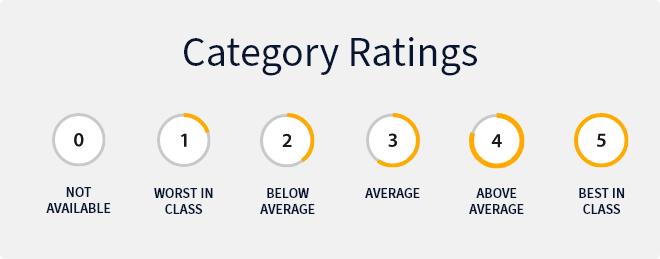
MS Project: The Gold Standard for Project Management
MS Project is the undisputed leader in handling complex, large-scale projects. Its advanced Gantt chart capabilities, resource leveling, and detailed reporting set it apart as the go-to tool for enterprise project management. However, its steep learning curve, high cost, and need for advanced project management knowledge can make it overwhelming for smaller teams or those new to project planning.
- Best for: Enterprise-level projects, construction, engineering, IT development, and government contracts requiring meticulous task management and reporting.
- Overall Score: 4.8/5
- Powerful and feature-rich but requires expertise to unlock its full potential.
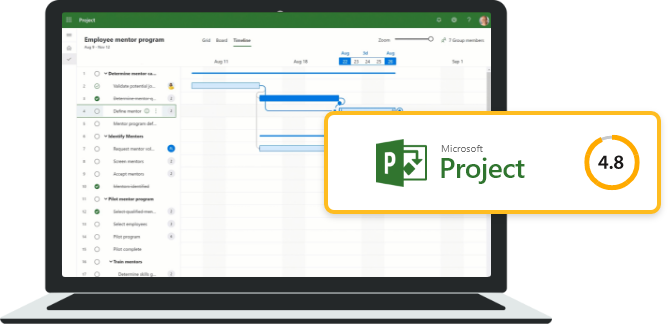
MindView: The Most Versatile Option
MindView excels with its dynamic ability to switch between Gantt charts, mind maps, timelines, and Kanban boards. Its intuitive interface and seamless Microsoft Office integration make it accessible to both beginners and experienced professionals. While it doesn’t quite match the depth of MS Project in advanced features like resource leveling or baselining, its usability and cost-effectiveness make it a fantastic alternative for teams seeking flexibility.
- Best for: Creative agencies, consulting firms, finance departments, and educators needing an intuitive, visually-driven tool for project management.
- Overall Score: 4.6/5
- Highly versatile and user-friendly, with excellent visual tools and robust integration capabilities.
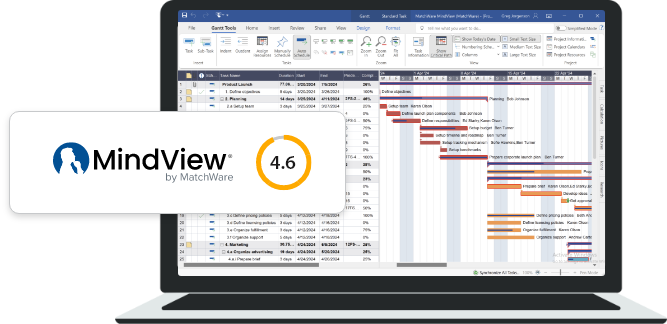
MindManager: Best for Visual Strategists
MindManager combines Gantt chart functionality with strong visualization tools like mind mapping and flowcharts. It’s ideal for brainstorming and task tracking but falls short in advanced Gantt chart features like baselining and resource management, making it better suited for smaller-scale projects and strategic planning.
- Best for: Startups, small businesses, and strategic planning teams focused on creativity and task visualization.
- Overall Score: 4.3/5
- Great for visual strategists, but limited for complex project management needs.
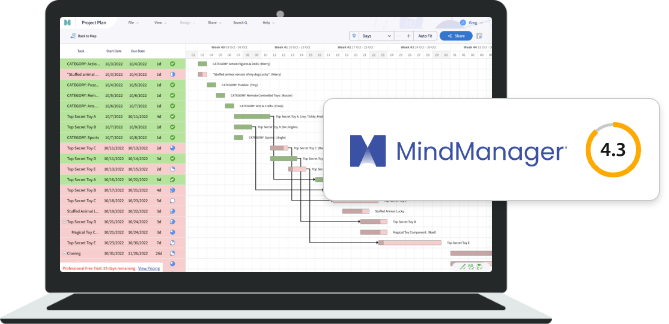
Create your own Gantt chart today!
Free 30 Day Gantt Software Trial
